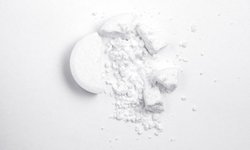Rapid and material-sparing feasibility screening for hot melt extrusion
Amorphous solid dispersions (ASD) present a solution for enhancing the bioavailability of crystalline APIs that are otherwise poorly soluble. Two primary methods for manufacturing ASDs are spray drying and hot melt extrusion (HME). While HME offers advantages such as higher throughput and eco-friendliness, it often leads to lower drug loadings and poses a greater risk of API degradation. To assess the suitability of HME as a manufacturing route for ASDs, understanding achievable API loadings without degradation is crucial. Current HME screening methods may not accurately account for the kinetics of API dissolution and degradation, necessitating a more representative approach. This presentation introduces a screening process designed to rapidly evaluate HME feasibility. Compared to conventional methods, this protocol provides more precise predictions regarding both API loading and degradation while also conserving materials and time.
Key learning objectives of the video by Lonza:
- Understand key differences between spray drying and HME, and why different feasibility screening approaches are needed
- Limitations of current small-scale HME screening techniques
- Demonstration of newly developed HME screening process with a variety of model systems

Comments
No comments posted yet.















